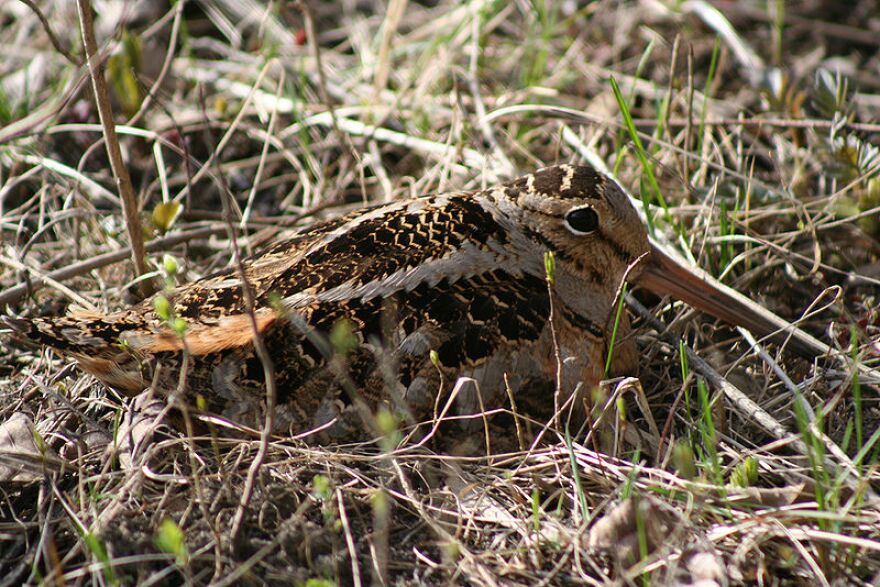With spring only a week away, ornithologists in Ozaukee County are watching and working to conserve the many different species of birds that migrate through Wisconsin.
The scientists are working to identify the stressors birds face, from weather to shifting food sources, to shrinking habitats, and to conserve, what’s conservable.
As the director of the Western Great Lakes Bird & Bat Observatory Bill Mueller scouts for the earliest spring migrants in snow covered fields in Port Washington, he explains to WUWM's Susan Bence what type of birds they are looking for.
“Horned Larks, Snow Buntings, Lapland Longspurs gather in little mixed groups and they forage in these plowed fields – all three of them are found circumpolar," Mueller says. Circumpolar means the birds populate the north end of the planet.
Some of these very small birds are headed to the arctic – because that’s where they breed. Mueller says their stop here is to refuel.

“Because they burn fat as their energy source and in a night of migration they can pretty much use up all of their fat," he says. "And, it takes them three, sometimes four days, to rebuild those fat reserves and then they can undertake the next leg of their migratory journey."
Intern Tim Demers assists Bill Mueller on his expeditions. When out in the field, they mark several dozen GPS coordinates that they will later check and recheck for birds stopping by during their migrations. The men will watch, count and listen, adding their data to the repository of avian studies.
Colleague Jonathan Stein, stationed at Harrington Beach State Park along Lake Michigan, tracks migratory waterfowl from a park bench.
“Some days, I’ve seen – both in the fall and the spring - hundreds of thousands of birds in the sky at the same time. It’s just overwhelming; it’s a natural spectacle," Jonathan Stein says.

As they spot a Long-Tailed Duck, Bill Mueller explains it is the all-time deep-diving champ. “Most diving ducks dive 10 to 40 feet of water; long-tailed ducks can dive 200 feet; they actually use their wings when they’re descending to the bottom,” he says.
During its stopovers in Lake Michigan, the duck has historically fed on grain-sized organisms. “It’s shrimp-like and the population of Lake Michigan has really declined, so we’re concerned about what effect that may have a long-tailed duck populations,” he explains.
Mueller says the brutal winter has added another layer of stress to all migrating ducks.
“Imagine you are one of these ducks in a flock with a thousand of your flock mates, and it’s midnight and it’s five degrees above 0. And, they’re aware of the fact that the water is freezing around them, so they have to keep moving to keep the water open" Mueller says. "And at some point, the flock sort of has a mind; all of a sudden it realizes ‘we’re out of here.'"

Ten miles west of Lake Michigan, Mueller makes one last stop to show intern Tim Demers a spot that soon will explode with migratory birdlife.
“The last week of March - the first week of April, all of these silver maples will be in flower..and one of the first really iconic species of this habitat will arrive – American Woodcock,” Mueller says.
The scientist admits to the downside of his work - he’s witnessing many species decline, but sharing his passion with a young disciple, helps.
Intern Tim Demers already does a pretty mean mating call. Bill Mueller calls that sound, a sign of hope.



